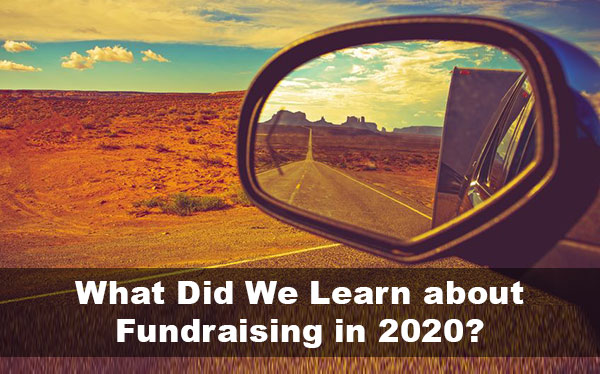2020 was a tough year, but it forced us as a nonprofit fundraising community to innovate and renovate in amazing ways that will resonate long into the future. So what exactly did we learn about fundraising in 2020? These are some of the top takeaways.
Takeaway 1: People are Generous in a Crisis
In November, The Chronicle of Philanthropy reported that 40% of donors are planning on giving as much or more in 2020. What’s interesting is the motivation factor. People are planning to give more because of the crisis. Their favorite nonprofits need the funding.
That giving, and that need for giving, has forged a tighter bond. 33% of the respondents said they care more about the causes they support now than they did before Covid.
Health charities and social justice charities are seeing the biggest bump. Other charities are still faring well, however. The trend is that people are giving more, to more causes, than they have in the past.
Takeaway 2: That Said, It’s a Smaller Percentage of People Who are Giving More
The American middle class (and its donor pool) has been shrinking for decades. Covid is accelerating this trend. As reported in Gilded Giving 2020:
- In 2000, 66% of American households gave to charity. In 2016, only 53% of households did.
- Households earning more than $200,000 a year gave 30% of charitable gifts in 2000. In 2017, this group was giving 52%.
- From 1995 to 2018, the top 1% went from giving an eighth to a third of all charitable gifts.
Covid is causing a K shaped economic recovery. The rich are getting richer and the poor are getting poorer. Harvard Business Review succinctly spells out what this means for nonprofits – you need to double down on major gift fundraising. Ask wealthier donors for more in 2021, and improve your plans for donor cultivation. (Here’s a quick guide to improving donor relationships!)
At the same time, don’t forget about the other donors! Though they might not be able to give as much, they probably will give what they can. This could be a good time to pitch multi-year pledge strategies or monthly giving.
Takeaway 3: Some Private Foundations and Funds Are Releasing More Funding
The top 1% has more right now while the majority have less. Many of those donors not only give directly to charities but are involved with private foundations, trusts, and donor-advised funds. Those entities are in some cases going beyond their normal giving ranges this year. It’s anticipated that more could do the same in 2021.
Develop an active grant research plan to make sure you are not missing out on these opportunities! It’s as simple as assigning one staff person or volunteer to take a few hours a month to mine new opportunities. If you’re unsure where to look, or how to get started, check out our article on getting ready for grants here.
Takeaway 4: Most Nonprofits Were Able to Shift to Virtual Events
Freewill sent a survey to hundreds of nonprofits in the United States to ask them about how they navigated 2020. 82% were able to shift at least some of their work and their fundraising events to virtual platforms. Most of the virtual events were purely educational (webinars, seminars, trivia nights, or video tours), aimed at keeping donors and their target audience informed. Most of the rest were fundraising events. Nonprofits are doing cool things like putting entire galas online, and hosting virtual races!
There were technical challenges and nonprofits found it more difficult to make virtual events engaging. But 57% said they met or exceeded their outreach and/or fundraising goals.
This is good news! Think about virtual events such as online auctions for your upcoming fundraising events.
Also read: 6 Virtual Marathon Models to Run Away With
Takeaway 5: While We’re Trying to Be Positive, Lots of Nonprofits Will Not Make It
The doom reports indicate that a third of charities or more will not make it to 2021. Smaller charities and “non-essential” charities are being the hardest hit. While giving is up overall, demand has skyrocketed. Foundations and community funds along with major donors are receiving unprecedented numbers of requests.
While this news overall is negative, it’s a good time to look at your particular charity within the context of the greater good. How do you fit in with the local, regional, and national context of need right now? You really need to make your work stand out. If you are struggling financially, you need to cut whatever services or programs are not essential to your core mission. You likely need to get your leaders together and come up with a whole new strategy.
You might even think about expanding your partnerships, to combine capacity with other like-minded organizations in your area. This is not a time to wallow, but to innovate! Those that do so will make it through these difficult times and come out positively on the other end.
In sum, Covid has changed how we fundraise, who is giving, and what we are fundraising for. You need to ask yourself as an organization if you are adapting accordingly.

